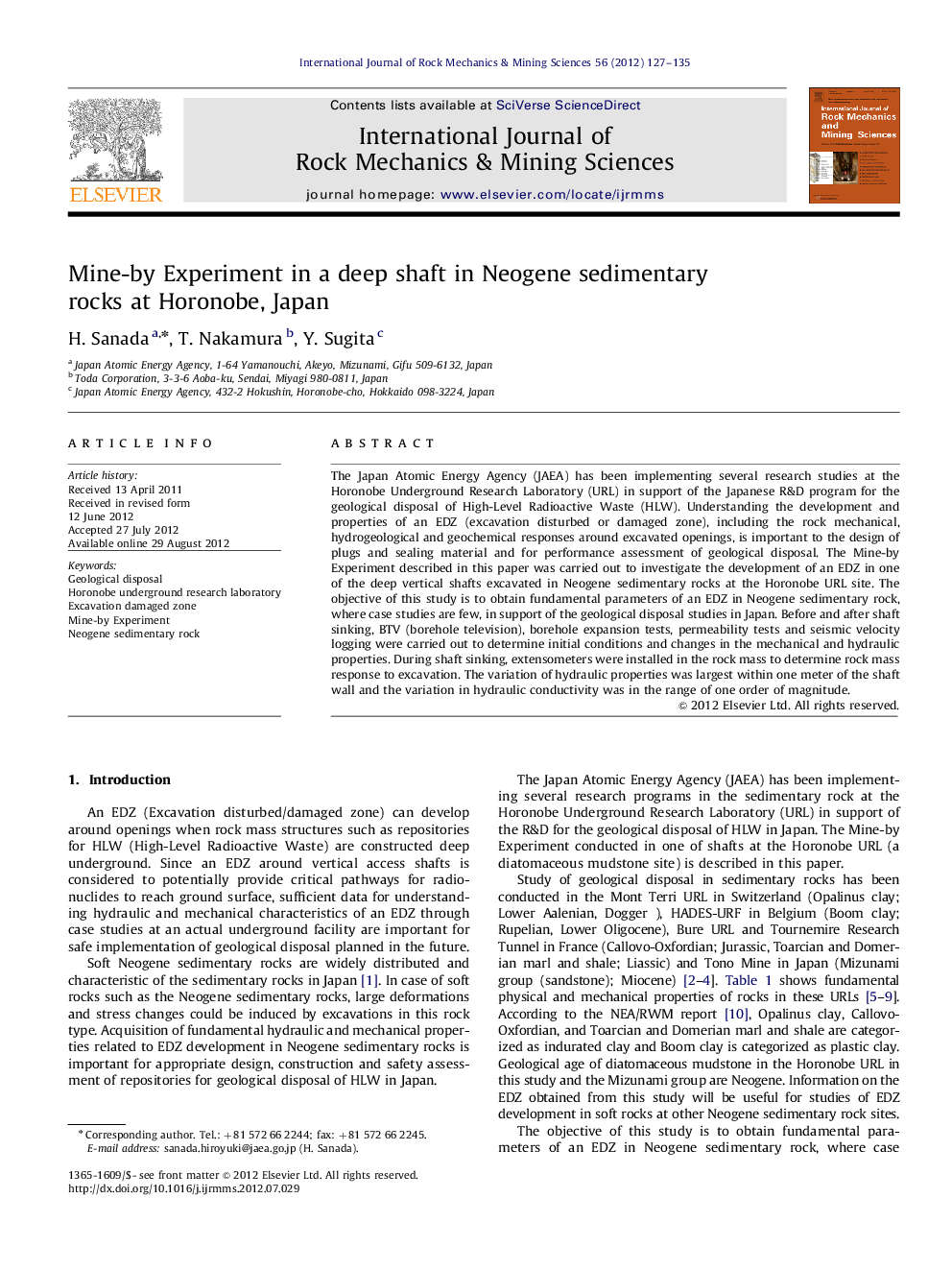| کد مقاله | کد نشریه | سال انتشار | مقاله انگلیسی | نسخه تمام متن |
|---|---|---|---|---|
| 809540 | 1468713 | 2012 | 9 صفحه PDF | دانلود رایگان |

The Japan Atomic Energy Agency (JAEA) has been implementing several research studies at the Horonobe Underground Research Laboratory (URL) in support of the Japanese R&D program for the geological disposal of High-Level Radioactive Waste (HLW). Understanding the development and properties of an EDZ (excavation disturbed or damaged zone), including the rock mechanical, hydrogeological and geochemical responses around excavated openings, is important to the design of plugs and sealing material and for performance assessment of geological disposal. The Mine-by Experiment described in this paper was carried out to investigate the development of an EDZ in one of the deep vertical shafts excavated in Neogene sedimentary rocks at the Horonobe URL site. The objective of this study is to obtain fundamental parameters of an EDZ in Neogene sedimentary rock, where case studies are few, in support of the geological disposal studies in Japan. Before and after shaft sinking, BTV (borehole television), borehole expansion tests, permeability tests and seismic velocity logging were carried out to determine initial conditions and changes in the mechanical and hydraulic properties. During shaft sinking, extensometers were installed in the rock mass to determine rock mass response to excavation. The variation of hydraulic properties was largest within one meter of the shaft wall and the variation in hydraulic conductivity was in the range of one order of magnitude.
Graphical AbstractFigure optionsDownload as PowerPoint slideHighlights
► The Mine-by Experiment was carried out in Neogene sedimentary rocks at the Horonobe URL site.
► The mechanical and hydraulic properties before and after shaft sinking were measured.
► The hydraulic properties variation in an order of magnitude was largest within 1 m of the shaft wall.
Journal: International Journal of Rock Mechanics and Mining Sciences - Volume 56, December 2012, Pages 127–135